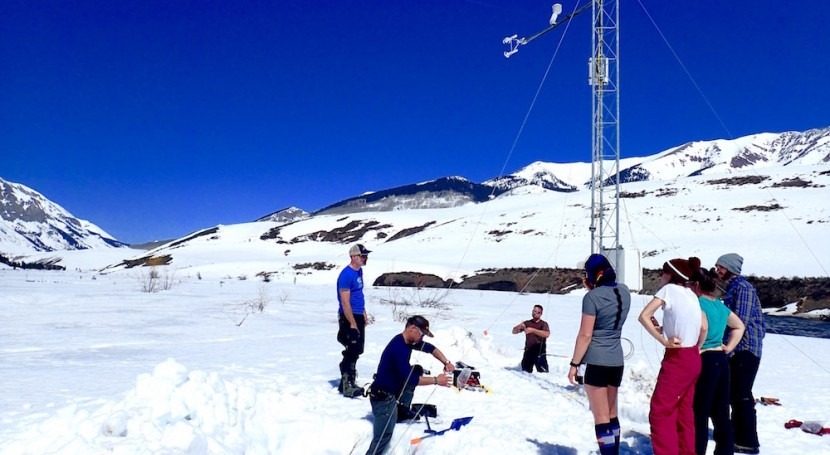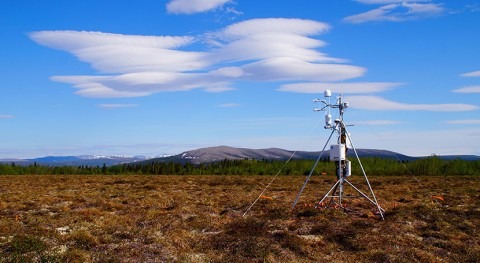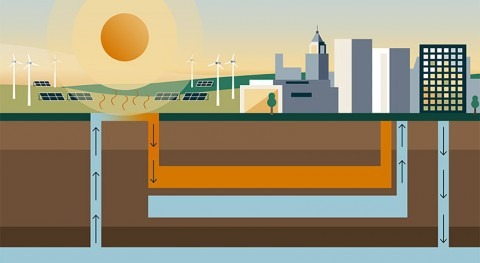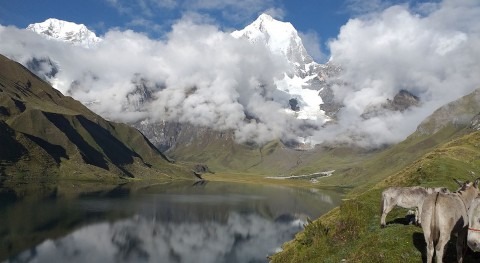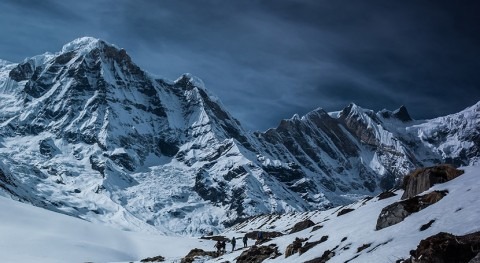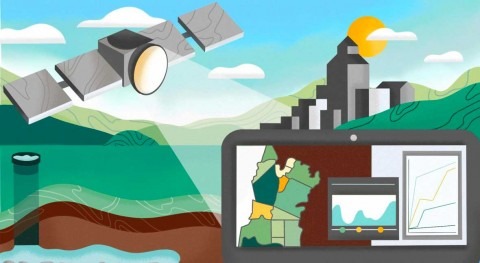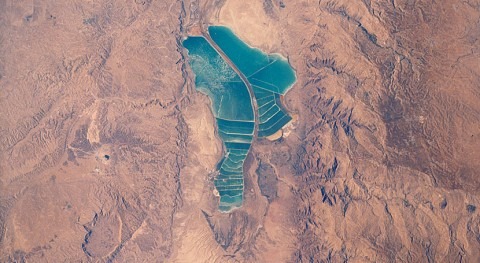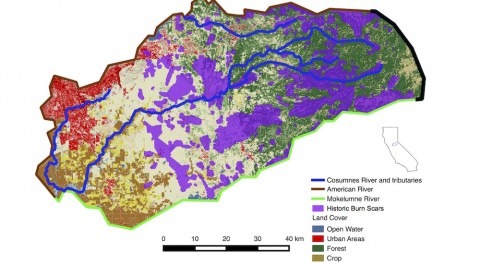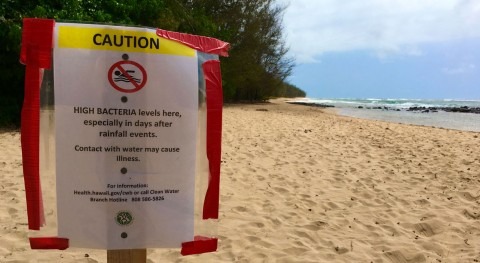The image of huge chunks of ice breaking away from glaciers and ice sheets, then floating out to sea in Earth’s most remote places, may be the most iconic symbol of a warming planet. And while most people will never see these familiar phenomena up close, what’s happening within some of the iciest settings still affects people and regions thousands of miles away.
Ecologist Heidi Steltzer, a Fort Lewis College professor and member of the Department of Energy’s Watershed Function Scientific Focus Area (SFA) project led by Lawrence Berkeley National Laboratory, studies how reduced snowpack and earlier snowmelt caused by climate change impact water supply in high-mountain areas. She is a lead author of a new report by the Intergovernmental Panel on Climate Change (IPCC), the United Nations body for assessing the science related to climate change. The Special Report on the Ocean and Cryosphere in a Changing Climate (SROCC) assesses the latest scientific literature to describe the impacts of climate change on the ocean and cryosphere – water in its solid state, which in mountains includes glaciers, permafrost, and snow.
Steltzer drew upon experience working in the Rocky Mountains of Colorado near the headwaters of the Colorado River in co-authoring the report’s chapter on high mountains. This marks the first time since 1996 that the IPCC has featured a chapter on mountains within one of its reports.
"The timing of snowfall and rate of snowmelt control microbial processes that appear to exert a significant control on nitrogen export from hillslopes to the river.”
“Mountain systems provide water to people – water that is essential for drinking, growing food, industry, and energy systems. Available water depends not just on how big a glacier is or how much snow falls or how fast melting happens, but also on how the ice and snow affect plants, microbes, and soils,” said Steltzer.
The power to move mountains
The IPCC invites select scientific experts to evaluate thousands of scientific papers published each year in order to provide policymakers with regular assessments of the scientific basis of climate change, its impacts and future risks, and options for adaptation and mitigation. Authors of the content on mountainous regions scoured the scientific literature for articles covering all high-mountain regions where the cryosphere is present year round or seasonally.
The SROCC adds to knowledge of glacier mass loss, thawing permafrost, and decreasing snow cover and snow duration, which affect mountain ecosystems, water supply, disturbances, and hazards. Authors of the chapter on high mountains assert that multiple hazards and risks stem from changes in the mountain environment, including impacts of variability and trends in water supply on hydropower production and implications for energy policy and water governance.
The report describes a lengthening of the growing season and more plant growth in some regions, such as the Qinghai-Tibet Plateau, due to shorter duration of snow cover. Yet, in other regions, such as the U.S. Rocky Mountains where Steltzer and the Berkeley Lab Watershed Function team are working, plants aren’t growing more even though the growing season is longer.
"Available water depends not just on how big a glacier is or how much snow falls or how fast melting happens, but also on how the ice and snow affect plants, microbes, and soils"
Susan Hubbard is lead of the DOE Watershed Function SFA project and Associate Laboratory Director for the Earth & Environmental Sciences Area at Berkeley Lab. According to Hubbard, “The multidisciplinary approach of the Watershed Function SFA aims to understand how disturbances such as earlier snowmelt influence interactions between bedrock, soil, microbes, and vegetation across changes in elevation and gradients and how this in turn affects downstream water supply and water quality.”
“Heidi’s expertise in mountain ecology is invaluable to this project, as is her understanding about how different mountainous watersheds across the world are responding to changing conditions.”
Filling the gaps
Recent SFA findings will help fill gaps identified in the SROCC report and serve as a resource for future IPCC reports. For example, the report explores the huge change in the amount of snowfall from year to year over the past three years across Colorado and many regions of the Western U.S. Also, during low-snow, early melt years, plant growth is increasingly synchronized across different elevations. Under climate change, the timing of plant growth is changing, which will affect water availability and nutrient retention and loss through plant interactions with microbes.
According to Eoin Brodie, Deputy Director of Climate and Ecosystem Sciences at Berkeley Lab and Watershed Function SFA project member, “The timing of snowfall and rate of snowmelt control microbial processes that appear to exert a significant control on nitrogen export from hillslopes to the river.”
Together, Steltzer, Brodie, and SFA team members are using field data to inform computer model development and models to inform understanding of future watershed behavior. In doing so, they are building a system for predicting water supply in the Western U.S. that includes how declining snow cover affects these plant and microbial dynamics.
"The increasing inconsistency of mountain snow and rain is shocking"
The mountains are calling
Now fall has arrived in the mountains of Colorado, and SFA researchers are just completing sampling after a high snow year, one in which there was abundant water until the monsoon rains failed to show.
“The increasing inconsistency of mountain snow and rain is shocking,” said Steltzer. “These conditions let us study how both abrupt and gradual changes in snow dynamics impact water availability and water quality, which are critical for downstream industry, people and the economies of communities in mountain regions and beyond.”
A takeaway for Steltzer from her work on the report is to question why mountains don’t receive more attention. She thinks that for the vast majority of people around the world – who don’t live near mountains – it can be hard to feel connected to the mountains in any meaningful way.
“While the mountain cryosphere is critical for providing billions of people with water – more people than we likely realize or can characterize with data – its significance still can go largely unnoticed,” Steltzer says.
“We pay attention to the changes near us more than those taking place far away. This report is an opportunity to learn about these distant changes in the Earth’s mountain and polar regions. Scientists are monitoring them, charting rates of change to come, and sharing what they are witnessing on mountain tops and polar lands and seas. Changes in these remote regions affect us all.”


